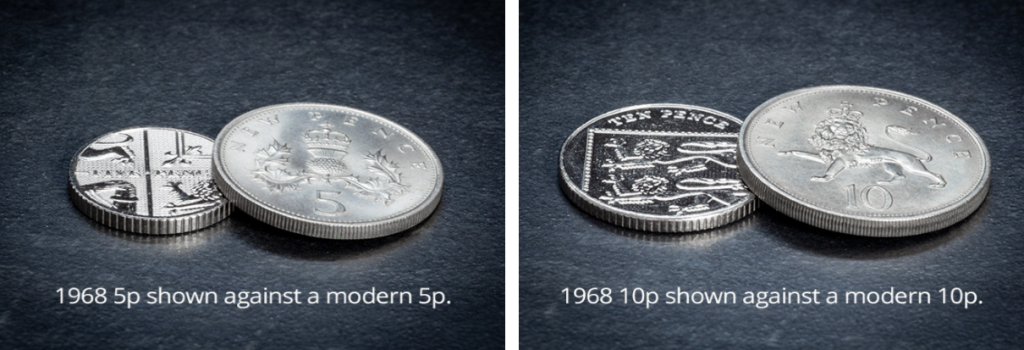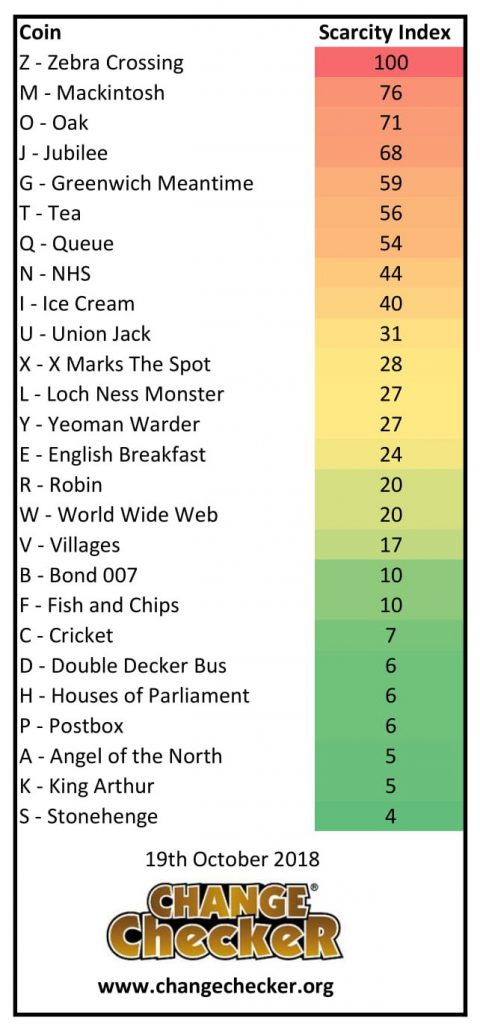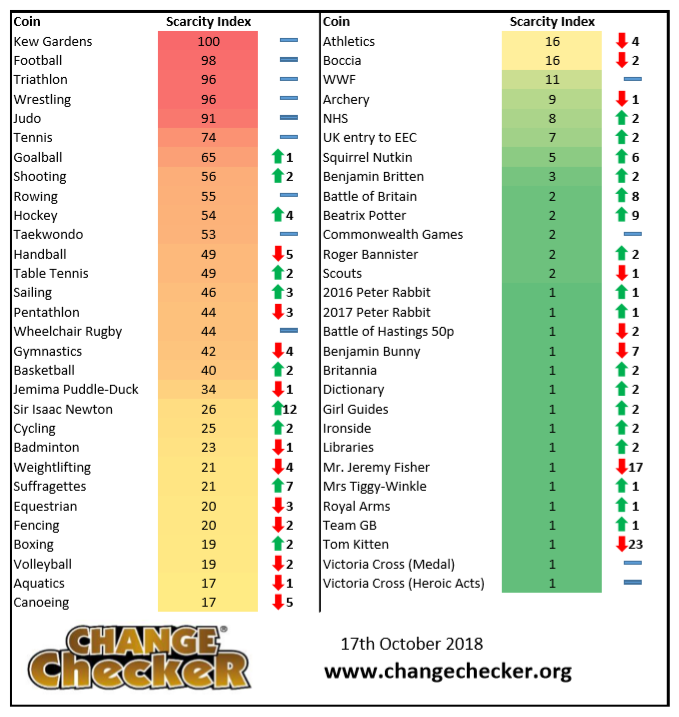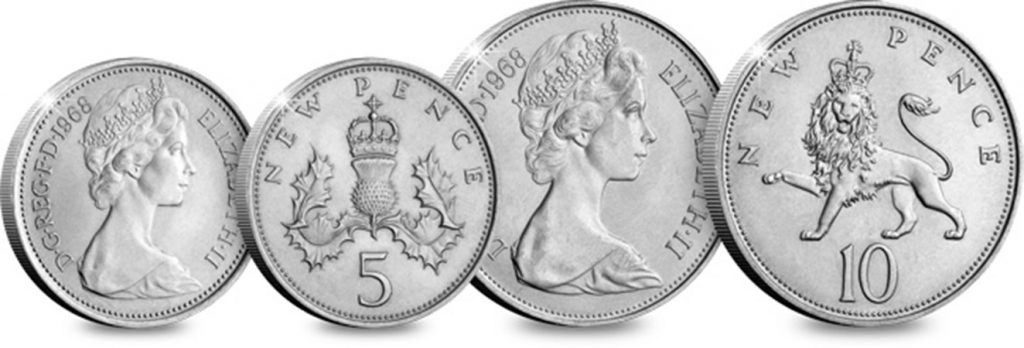Blog Home
Confirmed: Brexit 50p will be issued in 2019
*** UPDATE 12/08/2019 ***
The Chancellor Sajid Javid has asked officials if it will be possible to produce Brexit 50p coins in time for Britain’s departure from the EU in October 2019.
Previously, Chancellor Philip Hammond planned for just 10,000 commemorative Brexit coins to be struck for the event, however Javid intends millions of Brexit 50ps to be produced for circulation.
As mentioned in the blog below, the coin will have the words, “Peace, Prosperity and Friendship with all nations” and feature the date of Brexit – now 31st October 2019.
But with only a few months to go, will the coins be signed off by the Queen’s privy council and struck by The Royal Mint in time for Brexit?
Click here to sign up for the latest Brexit 50p updates.
It’s official! A Brexit 50p WILL be issued by The Royal Mint to mark the UK’s exit from the EU!
Within his budget, the Chancellor unveiled his advanced plans for the 50p coin, which will be released in Spring 2019.
As such a controversial issue, which has created much disruption across the UK and the EU since the referendum in June 2016, Philip Hammond hopes that this new coin, which is expected to bear the phrase ‘Peace, prosperity and friendship with all nations’, will promote the positivity of the event.

Brexit 50p announced. Credit @HRTreasury
In our previous blog, we asked Change Checkers if they would like to see a Brexit coin and 68% of you believed that such a significant moment in Britain’s history should be commemorated with a 50p coin. The Government has now finally conceded to create a gesture for this landmark moment and recognise its importance, although Treasury sources say the department has secretly been working on plans for the coin for months now.

The importance of Brexit can now be likened to Britain’s entry to the European Economic Community, which was then incorporated into the EU in 1993. A 50p coin was issued in 1973 to mark the occasion, featuring nine hands clasping each other in a circle, symbolising the nine member states of the community, intended to represent the trust, assistance and friendship which comes with EEC membership. So important was this event, that in 1998 the first “new sized” commemorative 50p was issued to commemorate 25 years of the UK in the EEC.
89,775,000 of the 1973 50p coins were struck for collectors but is no longer in circulation, whilst the 1998 coin has a mintage figure of 5,043,000 and can still be found in circulation.

1973 and 1998 EEC 50p coins
It seems that the idea of commemorating Brexit in some way is popular amongst collectors, as commemorative 50p shaped Brexit souvenirs are now available on eBay and are currently selling for £6.99. These are not legal tender, but go to show that a Brexit 50p coin is certainly in demand and could be incredibly sought-after.

Brexit commemorative medal. Credit: eBay
An order has now been issued by Mr Hammond to The Royal Mint advisory committee to draw up a designs for the Brexit 50p coin, which should be signed off later this year. Just as the EEC 50p from 1973 intended to promote the development of new relationships, so too will the Brexit 50p, but what do you think about the plans for the new coin?
We posted a poll on our Facebook page to find out what Change Checkers think and 66% of you think we should have a Brexit coin, compared to just 34% voted against the coin and the majority opinion seems to be that we had a coin for entering the EU, so we should also have one for leaving.

Sign up to receive updates about the 2019 Brexit 50p coin:
50 years since the most important moment in British numismatic history…
2018 marks the 50th anniversary of arguably the most important moment in British numismatic history – the first coins issued for decimalisation.
In 1968, the British public would have found 5p and 10p coins in their change for the very first time, issued as part of Britain’s conversion to a system of decimal currency.

1968 5p and 10p coins
The coins bore new heraldic designs, but were exactly the same size and value as shillings and florins, which meant the changeover process should have been a smooth transition. However, after generations of pounds, shillings and pence, the Decimal Currency Board still needed to reassure suspicious Britons to go decimal – a case which had actually been argued as long ago as 1696 by Sir Christopher Wren.

Advert from the Decimal Currency Board. Credit: Daily Mail
It was the 1960 report by the Association of British Chambers of Commerce and the British Association for the Advancement of Science which finally set into action a currency based upon simple multiples, a system already adopted by a number of Commonwealth countries including Australia, New Zealand and South Africa.
A massive number of coins were required for the changeover, forcing The Royal Mint to move location from Tower Hill to its new production facility in Llantrisant, South Wales, where the first of almost six billion coins required for decimalisation went into production.

The Royal Mint at Tower Hill, London. Credit: The Royal Mint museum
It was then on the 23rd April 1968 that the new 5p and 10p coins went into circulation, operating as legal tender up to the sum of £5, with mintage figures of 98,868,250 and 336,143,250 respectively.
The humble 5p featured the Christopher Ironside reverse design until 2008 and has since featured Matthew Dent’s reverse design, following a public competition held by The Royal Mint. On the 27th June 1990, a reduced size version of the coin was introduced and the older, larger coins were withdrawn on the 31st December 1990, although the design remained unchanged.
Similarly, the 10p coin also featured Christopher Ironside’s reverse design up until 2008 when this was replaced by Matthew Dent’s. However, the 10p remained a larger coin until the 30th September 1992, when the reduced size version was introduced, with the larger coin being removed from circulation a year later.

As we seem to move ever closer towards a cashless society, the questions lingers as to how long these decimalised coins will remain a necessity… However, this year’s release of 26 brand new A-Z of Great Britain 10p coin designs just goes to show that the demand for the smaller denomination coins is still there. In fact, these little coins have become incredibly sought-after and have dominated news stories and conversations amongst collectors, with everyone wanting to get their hands on the elusive coins!
Although the nation seemed reluctant to accept these decimal coins back in 1968, I think it’s fair to say that they have now become a much loved part of British coinage and as we celebrate the 50th anniversary of the first decimalised coins, we can look back with fondness for the 5p and 10p coins.
Own the very first coins issued for decimalisation!
The First Decimalised Coins include the original 5p and 10p coins from their first year of issue, 1968.
Order yours today to mark the 50th anniversary of the introduction of these significant coins >>
The FIRST EVER A-Z 10p Scarcity Index!
The latest Change Checker Scarcity Index update of 2018 is here and excitingly, we have now been able to put together our first ever A-Z 10p Scarcity Index!
This information has been compiled using data from the third quarter of the year and presented in the easy to use indexes below to help you track the performance of your coins.
FIRST EVER A to Z 10p Scarcity Index
As more coins are starting to appear in circulation and Change Checkers are adding them to their collection, we are now able to use this data to put together the very first A-Z 10p Scarcity Index.

Initially, 2.6 million A-Z 10p coins were released, however recent news has revealed that another 2.6 million coins have now entered circulation! Therefore, we have estimated a mintage figure of 200,000 for each design in order to put together this index, combining mintage figures with the number of each coin listed in Change Checker’s collections and the number of each coin requested to swap by Change Checkers.
The clear front runner is Z -Zebra Crossing, sitting 24 points ahead of the second place coin, M – Mackintosh. Whilst everyone seems to be struggling to find the A-Z 10ps, these top few coins appear to be the hardest to come across so far, whereas S – Stonehenge, K – King Arthur and A – Angel of the North seem to be the most common. A – Angel of the North was actually the top design for the A-Z 10p Swap Index, suggesting it is most popular and therefore being swapped more often if people are finding multiples of this design.
It is only early days in terms of creating a fully accurate Scarcity Index for these coins, as we still await confirmed mintage figures for each design, and of course it is possible that this may change as more coins are found in circulation.
50p Scarcity Index

We’ve seen a lot of movement on the 50p index this quarter, possibly due to the high numbers of 2017 Beatrix Potter 50ps which have now entered circulation.
The Battle of Britain and 2016 Beatrix Potter 50p have both jumped up the index, but the most significant increase goes to the 2017 Sir Isaac Newton 50p, which actually has the second lowest mintage figure for any commemorative 50p in circulation. This coin has moved up 12 places this quarter, and I wouldn’t be surprised to see it continue to improve.
Of course, Kew Gardens still remains the most scarce UK 50p coin with a mintage figure of just 210,000 and in fact, our top 6 coins have remained consistent since last quarter.
£2 Scarcity Index
We’re still waiting on the 2017 WW1 Aviation and Jane Austen £2 coins to enter circulation, and so there hasn’t been much movement for the £2 index this quarter.
The ever popular Commonwealth Games £2 coins remain at the top, although Wales has now moved down to become the least popular of the four. Our final 8 remain consistent and the only major movement goes to the Wireless Transmission £2 coin, which has fallen 7 places down the index.
We’re eagerly awaiting the newer coins to enter circulation, which I’m sure will then cause a significant re-shuffle of the leaderboard!
How the Scarcity Index works
Generally collectors have had to rely upon mintage figures to identify the scarcest coins. But they only tell part of the story. Trying to find a good quality coin from 15 – 20 years ago, even for a higher mintage issue, is much more challenging than a more recent issue, as coins become damaged over time and are ultimately removed from circulation.
Additionally, some designs are more hoarded than others by people who might not normally collect coins – the poignant First World War £2 Coin series being an example. Finally, it can be up to a couple of years before the Royal Mint eventually confirms the actual mintage for an issue.
That’s why we have combined the mintage information with two other key pieces of information.
- How many of each design are listed as “collected” by Change Checkers, indicating the relative ease of finding a particular coin.
- The number of times a design has been requested as a swap over the previous 3 months, showing the current level of collector demand.
Importantly, as new coins are released and popularity rises and falls across different designs the Scarcity Index will be updated quarterly allowing Change Checkers to track the relative performance of the UK’s circulation coins.
How much are my coins worth?
The Scarcity Index does not necessarily equate to value but it is certainly an effective indicator. For example, the Kew Gardens 50p coin commands a premium of up to 160 times face value on eBay.
What about £1 Coins?
The £1 Scarcity Index has already been published for the Round £1 coins and, because they are no longer being issued, this is now set in stone.
If you’re interested in coin collecting, our Change Checker web app is completely free to use and allows users to:
– Find and identify the coins in their pocket
– Collect and track the coins they have
– Swap their spare coins with other Change Checkers
Sign up today at: www.changechecker.org/app



